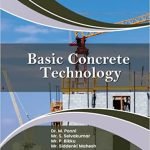Basic Concrete Technology
₹655.00
Availability: 1 in stock

Best Quality
Premium products crafted with care, ensuring long-lasting durability and reliability.

Good Shipping
Fast, secure delivery with reliable courier services for your benefits.

Cost Effective
Affordable pricing, discounts, and exceptional value without compromising quality.
Basic Concrete Technology
₹655.00
Availability: 1 in stock

Best Quality
Premium products crafted with care, ensuring long-lasting durability and reliability.

Cost Effective
Affordable pricing, discounts, and exceptional value without compromising quality.

Good Shipping
Fast, secure delivery and easy with reliable courier services for your benefits of the customer.

Excellent Service
Dedicated support team available to assist with any questions or concerns.
Q & A
 Basic Concrete Technology
Basic Concrete Technology
| Weight | 0.350 kg |
|---|---|
| Dimensions | 23 × 15 × 2.5 cm |
| Name of Author | Dr. M. Ponni, Mr. S. Selvakumar, Mr. P. Bikku, Mr. Siddenki Mahesh |
| ISBN Number | 978-81-19025-96-1 |
| No. of Pages | 212 |
Customer Review
 Basic Concrete Technology
Basic Concrete Technology
| 5 star | 0% | |
| 4 star | 0% | |
| 3 star | 0% | |
| 2 star | 0% | |
| 1 star | 0% |
Sorry, no reviews match your current selections





